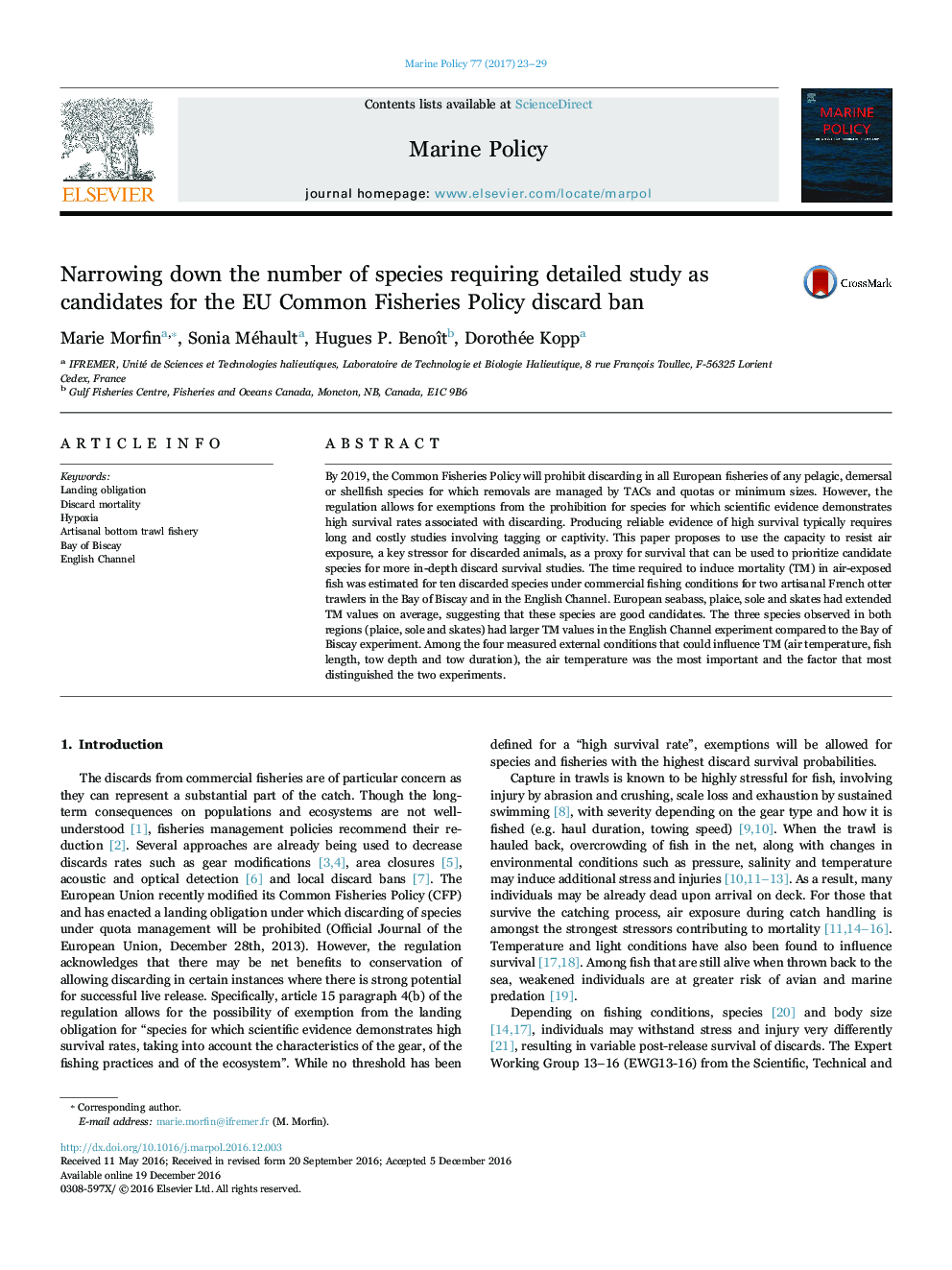| کد مقاله | کد نشریه | سال انتشار | مقاله انگلیسی | نسخه تمام متن |
|---|---|---|---|---|
| 5118223 | 1485502 | 2017 | 7 صفحه PDF | دانلود رایگان |
- Discard survival was investigated in small-scale bottom trawl fisheries.
- Mortality due to air exposure was used as a proxy of discard survival potential.
- Air exposure mortality was higher in the Bay of Biscay than in the English Channel for three common species.
- High survival potential was demonstrated for sole, plaice, seabass and skates.
By 2019, the Common Fisheries Policy will prohibit discarding in all European fisheries of any pelagic, demersal or shellfish species for which removals are managed by TACs and quotas or minimum sizes. However, the regulation allows for exemptions from the prohibition for species for which scientific evidence demonstrates high survival rates associated with discarding. Producing reliable evidence of high survival typically requires long and costly studies involving tagging or captivity. This paper proposes to use the capacity to resist air exposure, a key stressor for discarded animals, as a proxy for survival that can be used to prioritize candidate species for more in-depth discard survival studies. The time required to induce mortality (TM) in air-exposed fish was estimated for ten discarded species under commercial fishing conditions for two artisanal French otter trawlers in the Bay of Biscay and in the English Channel. European seabass, plaice, sole and skates had extended TM values on average, suggesting that these species are good candidates. The three species observed in both regions (plaice, sole and skates) had larger TM values in the English Channel experiment compared to the Bay of Biscay experiment. Among the four measured external conditions that could influence TM (air temperature, fish length, tow depth and tow duration), the air temperature was the most important and the factor that most distinguished the two experiments.
Journal: Marine Policy - Volume 77, March 2017, Pages 23-29
